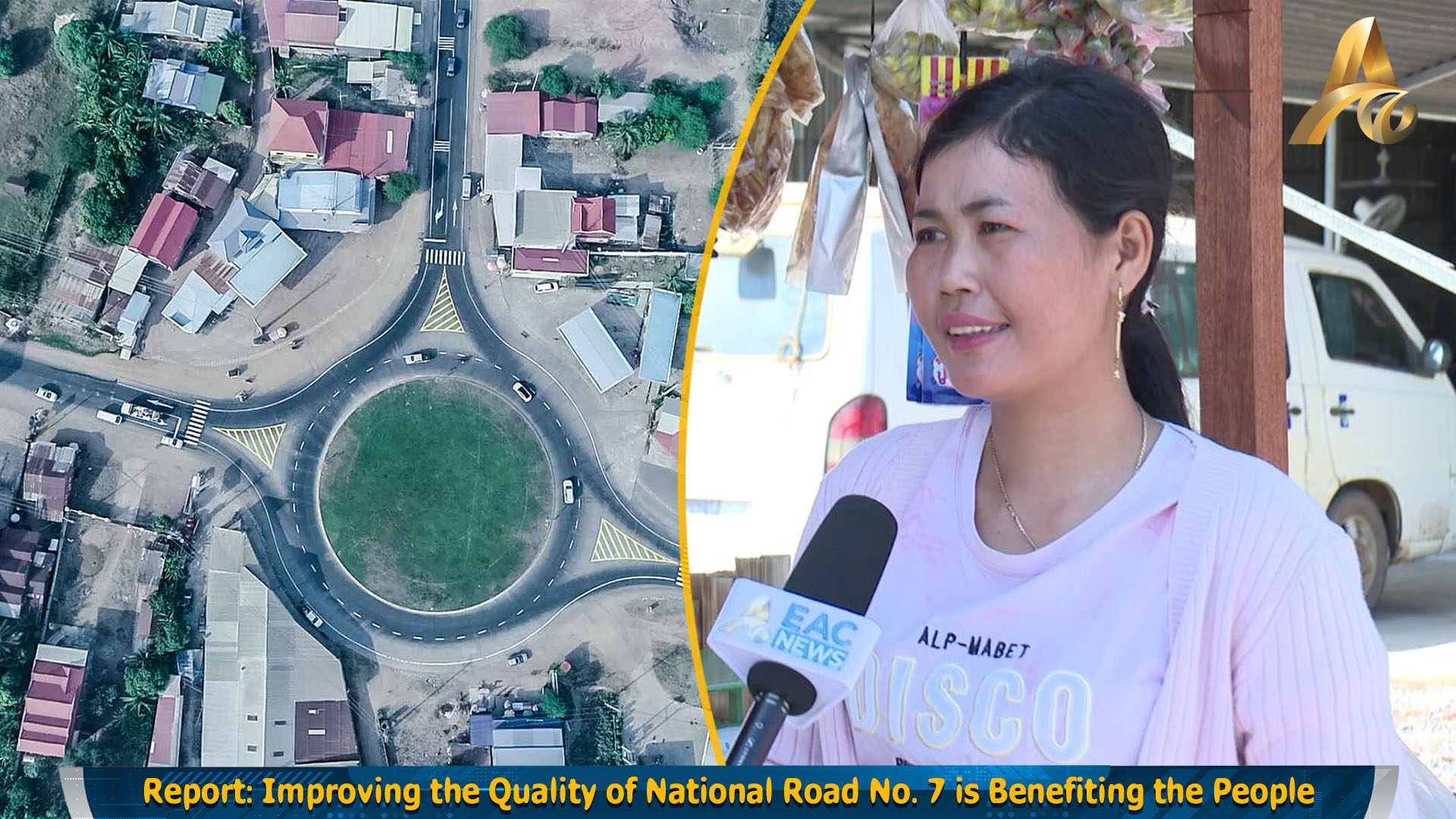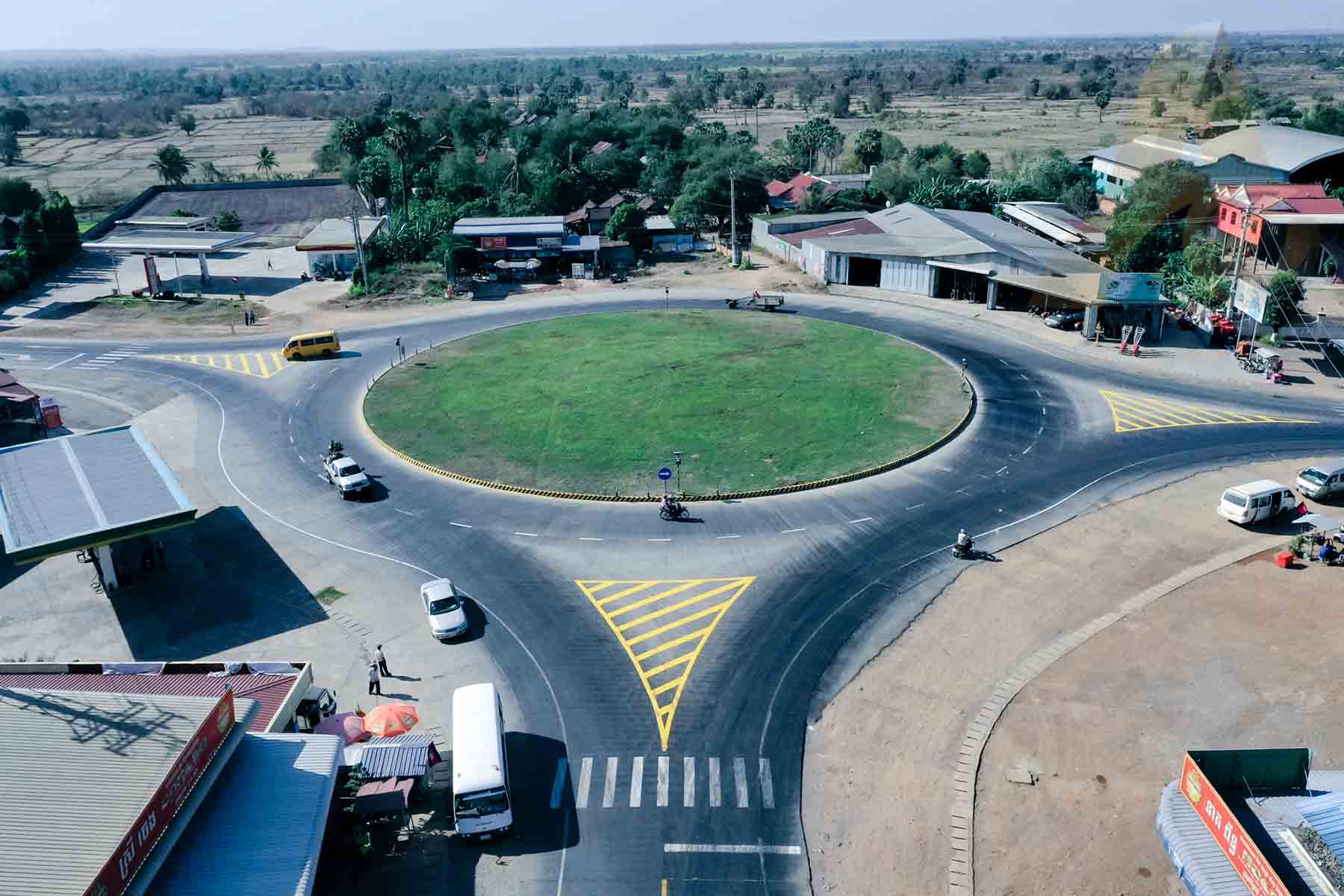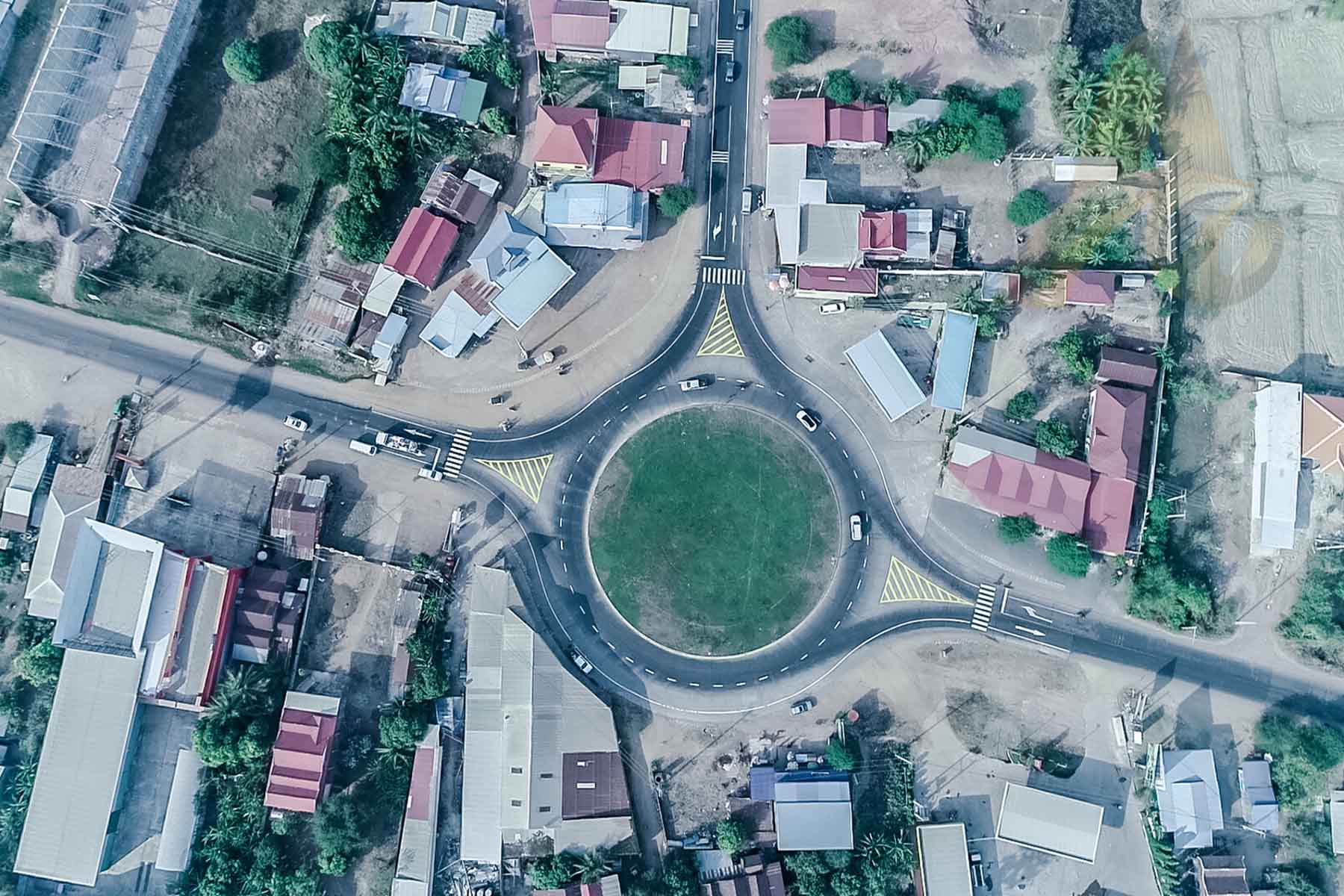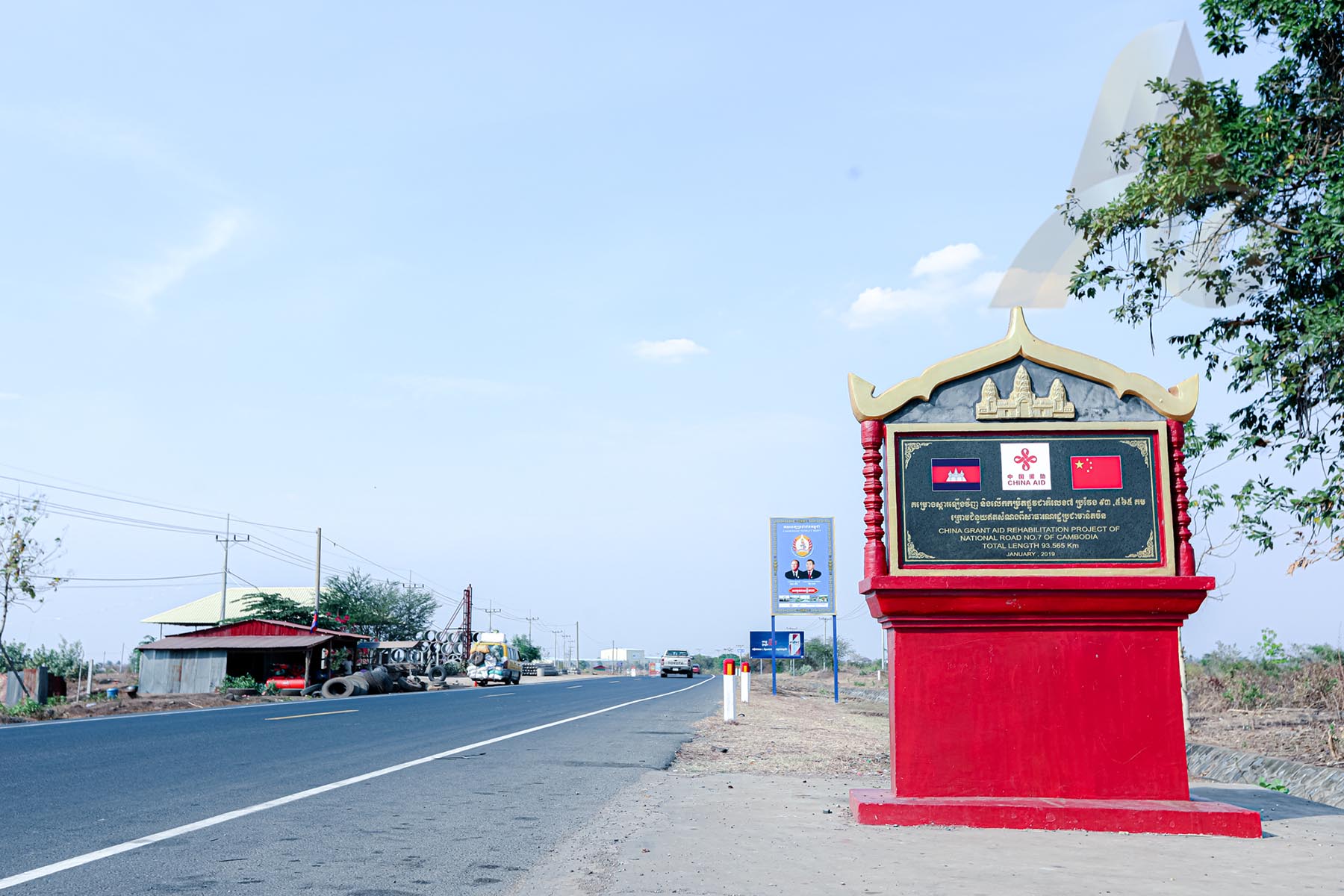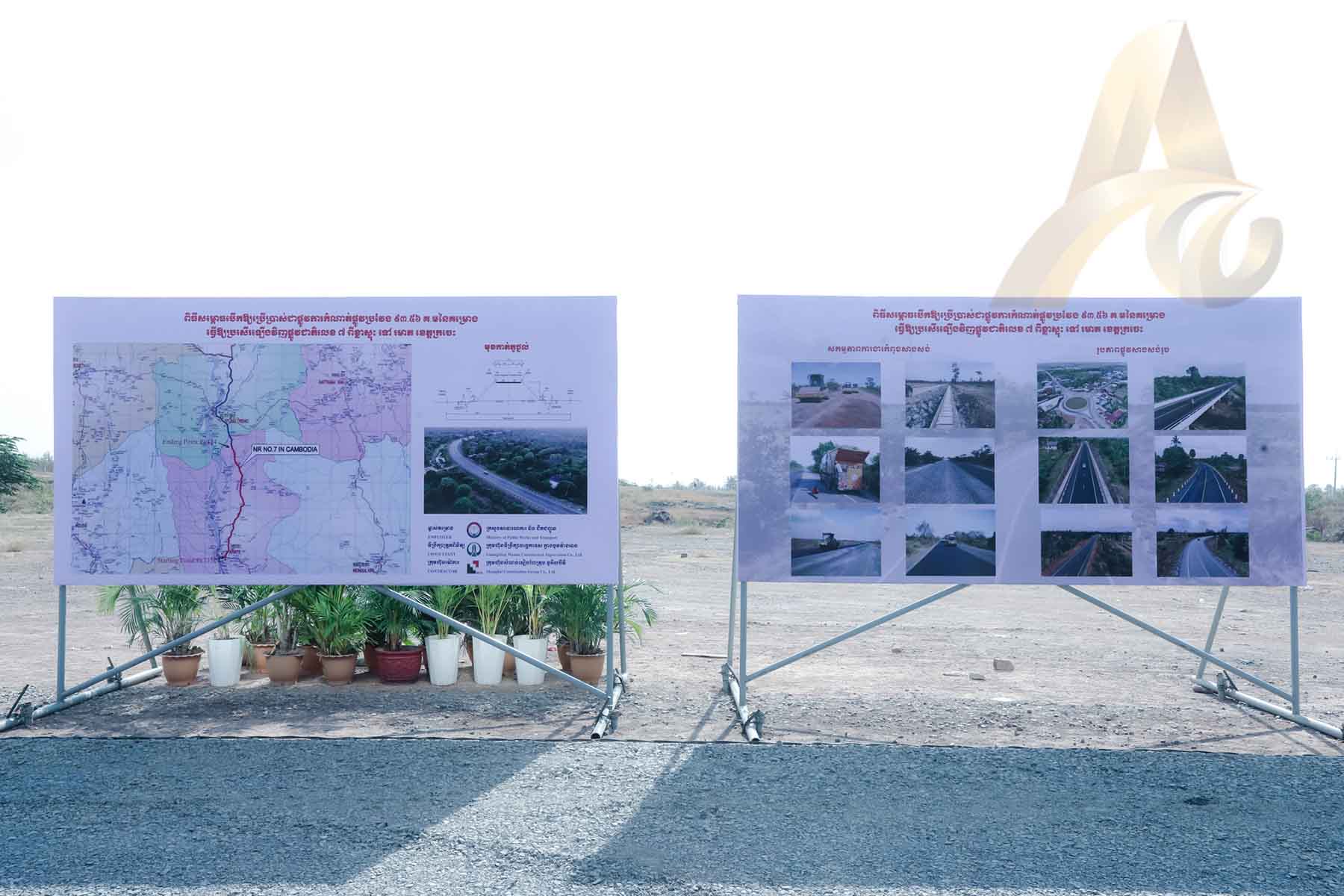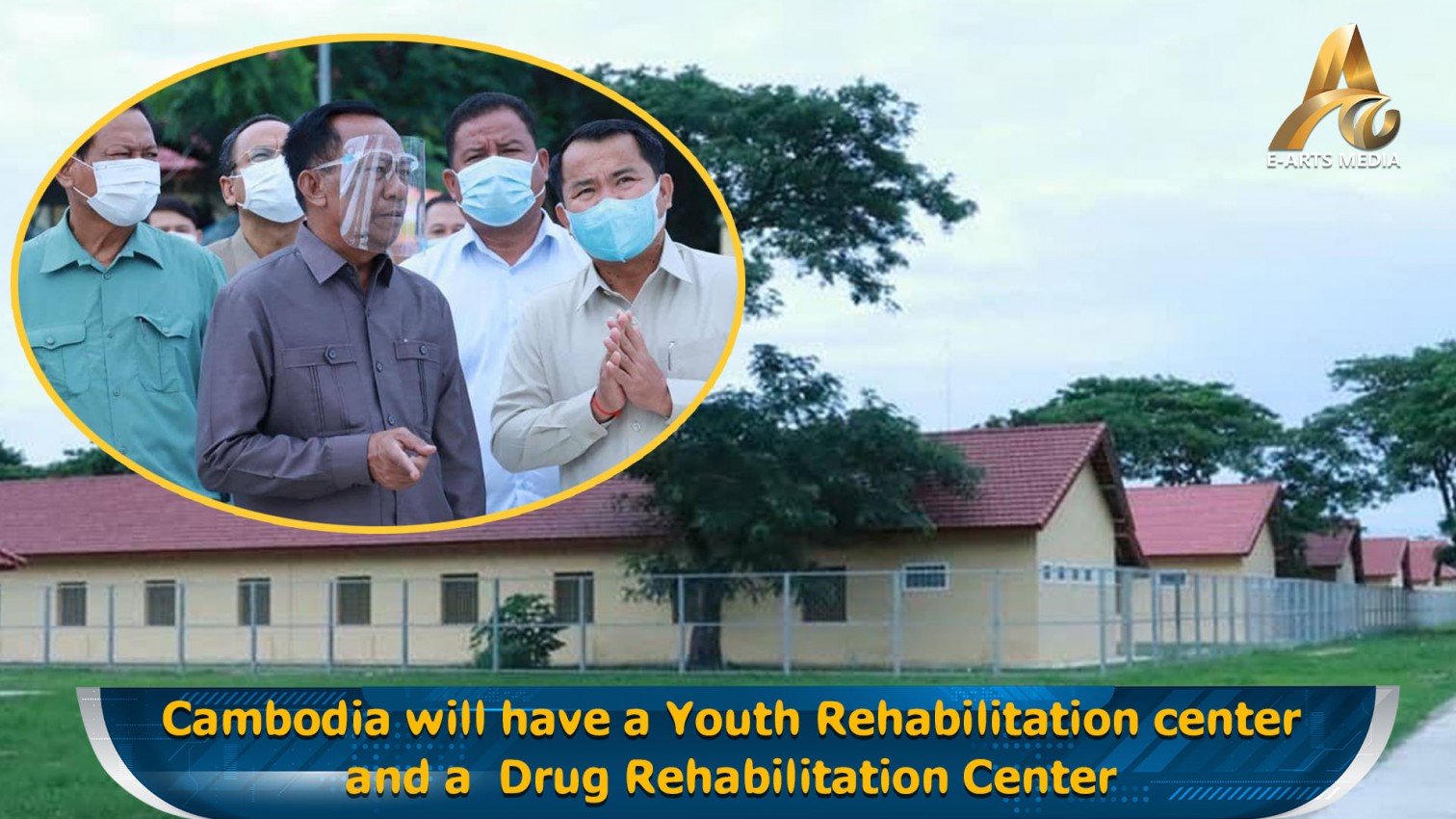KRATIE: The new section of National Road No. 7 in Kratie Province, is potentially becoming one of Cambodia's key economic roads as more and more people benefit from this important road infrastructure in the northeast of Cambodia. More vehicles will be able to drive on National Road 7 in Kratie, increasing ease of travel and also helping the economy of the residents living and doing business along the road. National Road No. 7 is one of the economic routes in the fourth economic pole of Cambodia, as planned by Prime Minister Hun Sen.
Speaking to some of the residents, 58-year-old, Ek Vy, compared National Road 7 to a miracle because in 2004 the area was almost deserted. She added that the construction of this road has divided the forest, and become an economic artery for those living in the area.
"Before (2004) this area was still all forest, people farmed rice just to eat. Now, we can trade for business, so our families are becoming prosperous,” she said.
National Road No. 7 was built with the help of the Chinese government. In 2004, the Chinese Ambassador to Cambodia, Wang Wentian, noted the construction of National Road No. 7 as one of the largest projects from China implemented abroad at the time.
He was quoted saying, "National Road No. 7 is a Chinese aid project that started construction in 2004, and was also China's largest aid project at that time. It can be said that it is not only an important Chinese aid project for Cambodia only, it is a project that is special to the history of Chinese aid given to other countries in the world at that time."
In addition to the remarks made by the Chinese Ambassador to Cambodia, Prime Minister Hun Sen spoke at the inauguration ceremony of the road on 7 February, recalling China's support for Cambodia at that time. He said, "After the 2003 election, the political stalemate due to the boycott of some political parties lasted almost a year before the government was formed. At that time, the CPP had only 73 seats, but our electoral system, the constitutional system, the government required a two-thirds majority, which required 82 votes, in order to form some countries with a wait-and-see attitude, but the People's Republic of China did not want to wait and see.”
In addition to providing aid for the construction of National Road No. 7, China has continued to help maintain and repair this road for nearly 20 years. Improving current road conditions not only helps to connect the country, but also helps the livelihoods people living along the road.
A resident who had just come and opened her shop along this road for the past three days, 32-year-old Van Sothary, said that the decision to move her stall and do business along this road was because she saw more people traveling up and down the road and more people beginning to live around the area.
She said, "Before, the road was difficult, but now that the Prime Minister has developed it, it is easy to travel, there are many tourists, there are many commuters,” […] So far, I have sold very well, but it's still not so much! I am a new seller on this road, so I don’t have much customers yet.” She, however, added that she is happy and satisfied with the new achievements that have happened in her province.
Khim Vanthorn, a 38-year-old truck driver who sells sweet potatoes to Vietnam, noted the difference between the road, and the income he received. He said that before the road was completed, he had to cross between other roads, which cost more gasoline and took longer to transport. However, after the road was improved, he returned to using this road in 2018, which he said has provided many benefits to business people like him.
"We save time and oil because the travel time is short. If the road is hard and has a lot of holes, then it will be inconvenient and consume a lot of fuel. A road like this is not congested, we grab the goods, deliver it and go back to grab more goods again,” he said.
The 93.56-kilometer section of National Road No. 7 from the Tiger Roundabout to O'Chrolang, O'Kreang Commune, Sambo District, in Kratie Province was officially inaugurated on Monday, 7 February 2022, with a US $39 million grant from China. This road is part of the Asian Highway 11 (AH11) that will promote the development of the Cambodia-Laos-Vietnam Development Triangle (CLV DTA), and help to develop the more remote areas of the three countries, particularly the provinces of Tbong Khmum, Kratie, Stung Treng, Ratanakkiri and Mondulkiri in Cambodia.
At the inauguration, the Minister of Public Works and Transport, Senior Minister Sun Chanthol, stated that this road is part of AH11 and the Central Greater Mekong Subregion (GMS) Corridor, which connects Kunming in southern China, through Vientiane (Laos), Phnom Penh, and toward the port of Sihanoukville, Cambodia.
The Senior Minister said, "This new achievement is an invaluable and precious bond that arises from the steel friendship and cooperation between the Royal Government of Cambodia and the Government of the People's Republic of China, to the people of Kratie Province, as well as people all across the country, for general and long-term use."
Residents living along the road, like 58-year-old Ek Vy, have expressed their happiness on the new achievements that Cambodia and China have achieved together in Kratie province.
"I am happy that the Prime Minister made the road and inaugurated it, our people have lived happily ever after, so many new people are coming and now it’s very crowded!"








